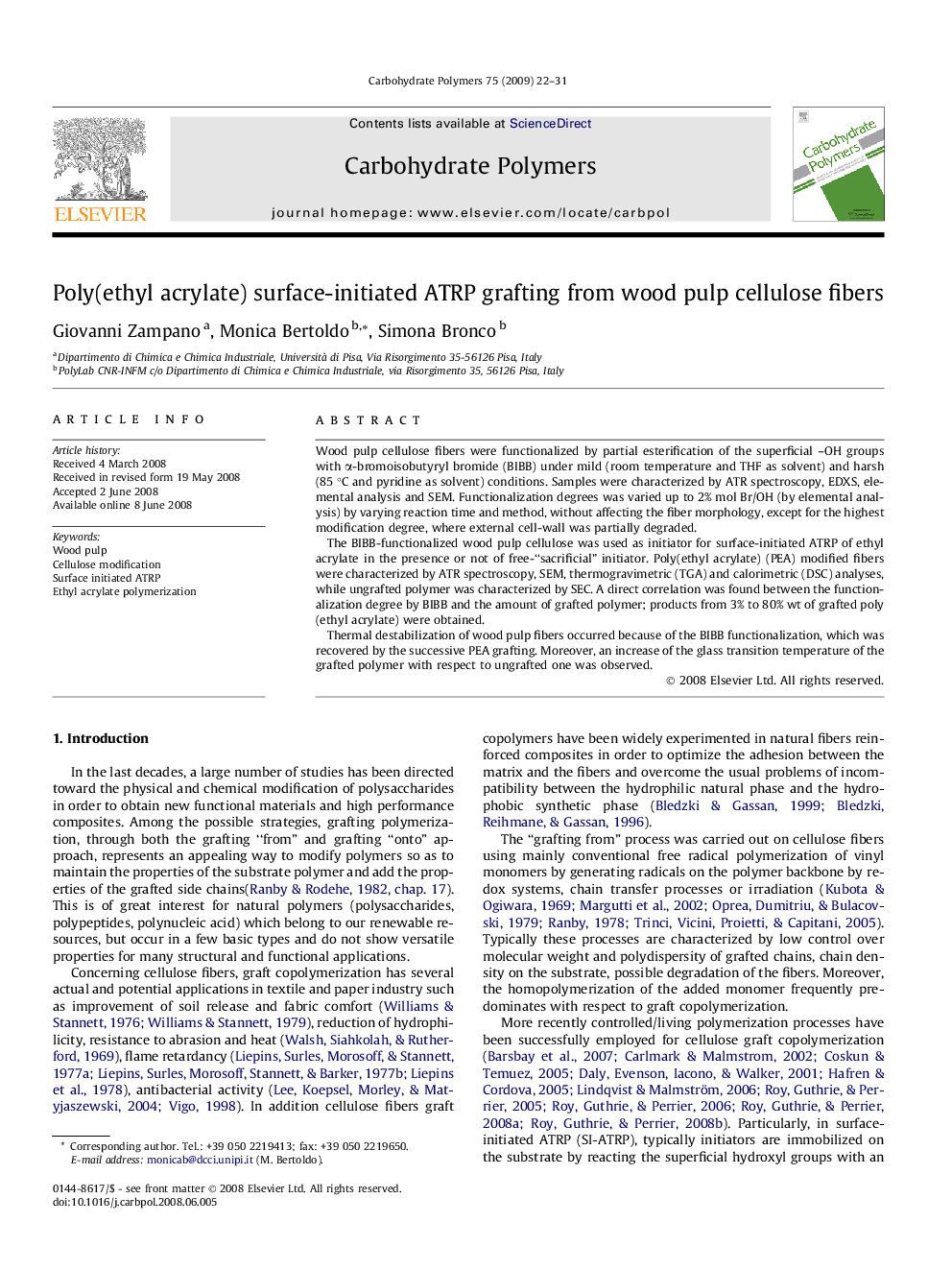| Article ID | Journal | Published Year | Pages | File Type |
|---|---|---|---|---|
| 1386360 | Carbohydrate Polymers | 2009 | 10 Pages |
Wood pulp cellulose fibers were functionalized by partial esterification of the superficial –OH groups with α-bromoisobutyryl bromide (BIBB) under mild (room temperature and THF as solvent) and harsh (85 °C and pyridine as solvent) conditions. Samples were characterized by ATR spectroscopy, EDXS, elemental analysis and SEM. Functionalization degrees was varied up to 2% mol Br/OH (by elemental analysis) by varying reaction time and method, without affecting the fiber morphology, except for the highest modification degree, where external cell-wall was partially degraded.The BIBB-functionalized wood pulp cellulose was used as initiator for surface-initiated ATRP of ethyl acrylate in the presence or not of free-“sacrificial” initiator. Poly(ethyl acrylate) (PEA) modified fibers were characterized by ATR spectroscopy, SEM, thermogravimetric (TGA) and calorimetric (DSC) analyses, while ungrafted polymer was characterized by SEC. A direct correlation was found between the functionalization degree by BIBB and the amount of grafted polymer; products from 3% to 80% wt of grafted poly(ethyl acrylate) were obtained.Thermal destabilization of wood pulp fibers occurred because of the BIBB functionalization, which was recovered by the successive PEA grafting. Moreover, an increase of the glass transition temperature of the grafted polymer with respect to ungrafted one was observed.
